Flying a kite is a fun and entertaining activity for all ages. You can make a simple kite with easily accessible materials like paper, string, glue, and bamboo sticks. In this article, we will guide you on how to make a kite with bamboo sticks in simple and easy-to-understand steps.
1. How to make a kite with bamboo sticks?
To make a bamboo kite with bamboo sticks, you’ll need the following materials: 2 small bamboo sticks, a thin piece of paper, a spool of string, a bit of glue, and scissors.
You can follow these steps to make a bamboo kite:
Step 1: Making kite sticks
Prepare a bamboo tube (about 50cm long) and a sandpaper. Use a machete to cut the bamboo tube into sticks. Use sandpaper to smooth any rough edges on the stick. Once the stick is ready, you can attach the kite to it using a strong and lightweight string.
You may tie the string securely to the top of the stick, ensuring that the kite is balanced and centered.
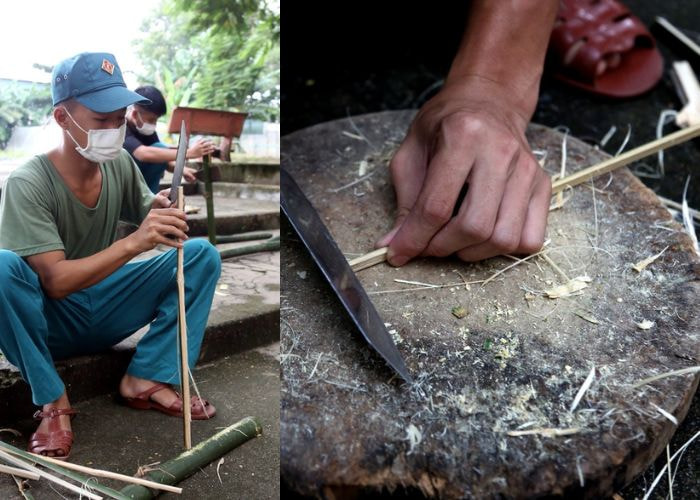
Step 2: Gathering Materials
Prepare: 2 small bamboo sticks, a piece of paper, a spool of string, a bit of glue, and scissors
Cut the bamboo sticks into two equal-length pieces, about 50 cm each. Then, cut both ends of each bamboo piece to create pointed tips.
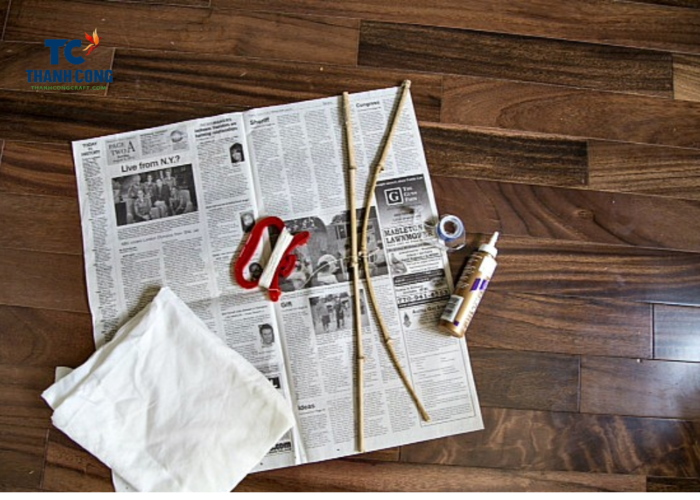
Step 3: Tying the kite frame
Place the two bamboo pieces in a crisscross shape to form an X. Use the string to tightly tie the two bamboo pieces together at the intersection point.
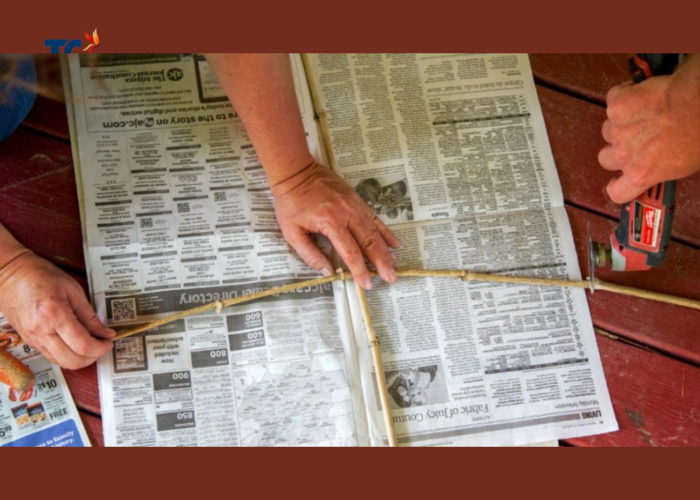
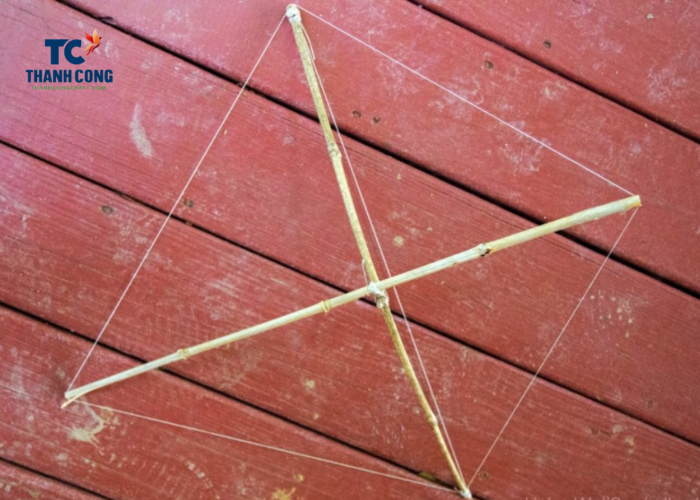
Step 4: Glue the paper into frame
Cut the paper into a square with sides equal to the length of the bamboo piece. Then, glue the paper into the bamboo frame.
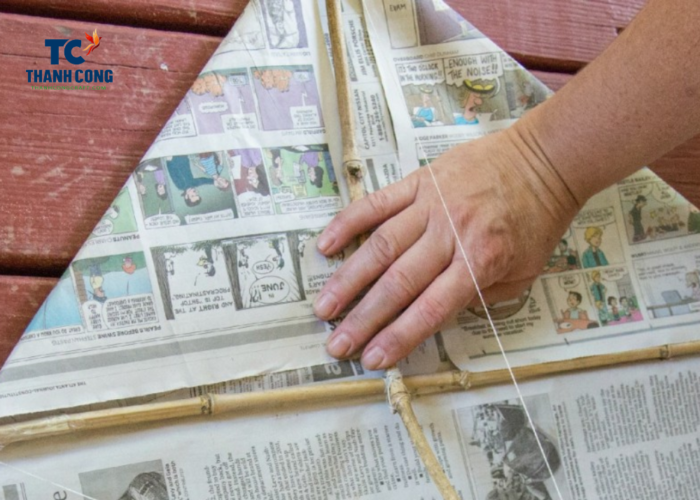
Step 5: Create a kite tail
Glue the 4 x 60 cm paper tail to the center of the kite to create the tail.
Typically, making paper kites involves having 1 – 3 tails. Specifically, the main tail may consist of 1 tail in the middle of the kite’s body, and it has the longest length, while the other 2 tails are located beside it.
Step 6: Attach the string to the kite
On the ‘spine’ of the kite, mark two points approximately 5 cm from each corner at a distance of ⅓ of the kite’s length. Use scissors or a needle to create small holes at these marked points and then secure the string to the kite.
Step 7: Check for balance
Hold the kite by the string and check if it hangs level. If the kite tilts to one side, you may need to adjust the attachment point of the string to achieve balance.
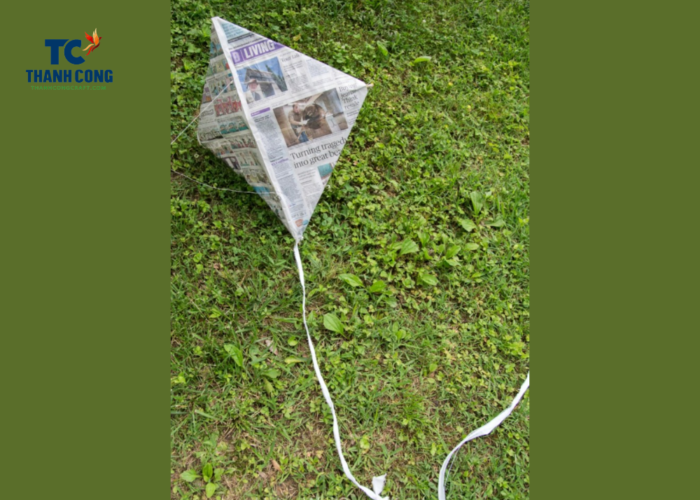
You have completed your bamboo kite. You can take it outside and try flying it on a windy day. Enjoy your time with your bamboo kite.
3. FAQs
3.1 Why is bamboo good for kites?
Bamboo is an excellent choice for constructing kites due to its unique combination of characteristics. Its lightweight nature ensures that the kite is easily maneuverable in the air, while its natural flexibility allows it to bend without breaking, absorbing impacts from wind gusts or sudden movements.
Despite being light, bamboo is remarkably strong, providing the necessary durability to withstand the tension and forces experienced during flight. Additionally, bamboo is readily available, making it a sustainable and eco-friendly option. Its ease of shaping further adds to its appeal, allowing for the creation of various kite designs.
3.2 How many sticks do you need to make a kite?
The number of sticks needed to make a kite depends on the specific design and structure of the kite. However, a traditional diamond-shaped kite typically requires two horizontal sticks (spars) for the top and bottom edges, and two vertical sticks (spars) for the sides. This makes a total of four sticks for the basic frame of the kite.
Additional sticks may be required for more complex designs or to provide extra support, especially for larger kites. The number of sticks can vary based on the kite’s size, shape, and the intricacy of its design. It’s recommended to refer to the specific kite plans or instructions for accurate information on the required number of sticks for a particular kite model.
3.3 What is the best string for a homemade kite?
For smaller kites or those designed for light winds, Braided Dacron Line is suitable due to its strength, durability, light and resistant to tangling.
The choice of string for a homemade kite depends on various factors, including the size and weight of the kite, as well as the wind conditions in your area. Durable and lightweight materials are generally preferred. Many kite enthusiasts use braided Dacron or polyester fishing line, as these materials provide a good balance of strength and low stretch.
It’s essential to select a string that matches the specific requirements of your homemade kite to ensure optimal performance and durability during flight. Additionally, always consider safety precautions and local regulations when choosing kite string.
Hopefully, with the instructions on “how to make a kite with bamboo sticks” in the above article, you can embark on your own creative DIY project. If you have any further questions, don’t hesitate to send thanhcongcraft an email us at info@thanhcongcraft.com or message us at WhatsApp: +84967485411.












